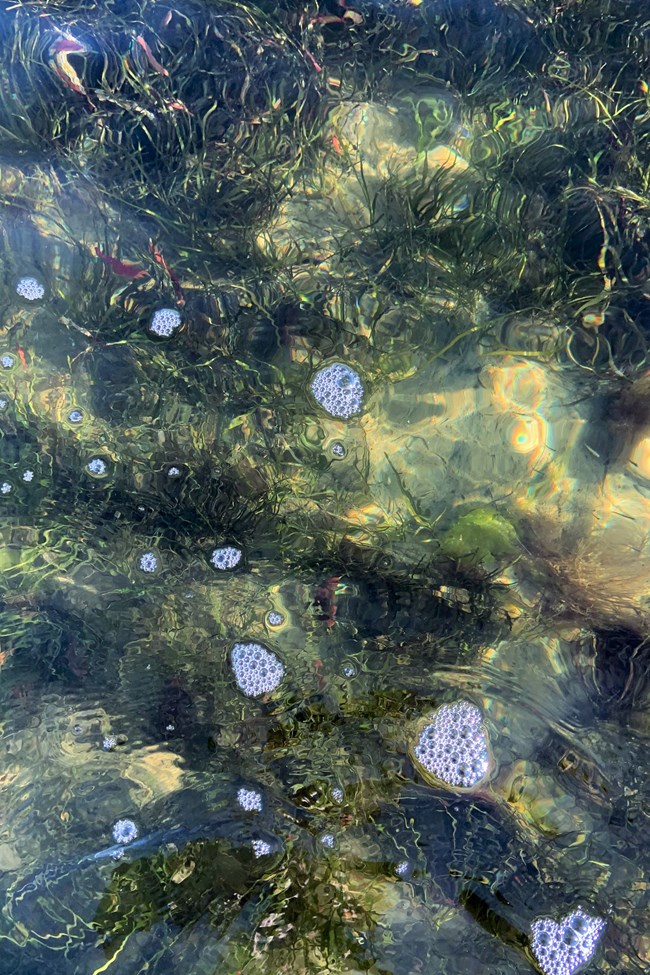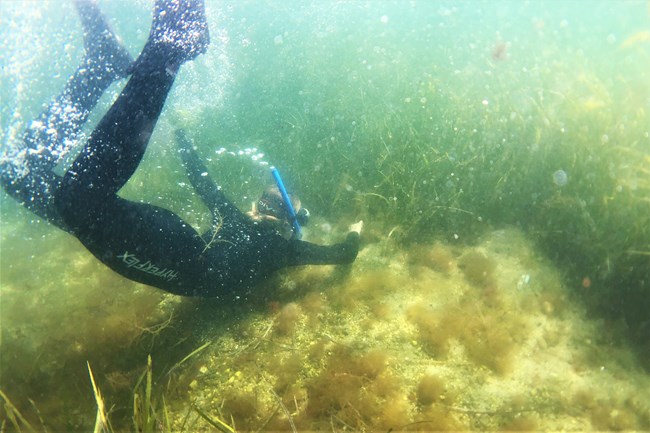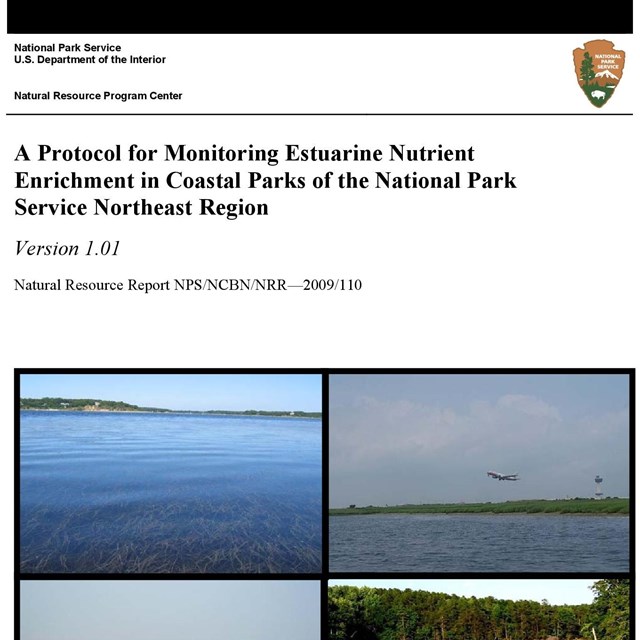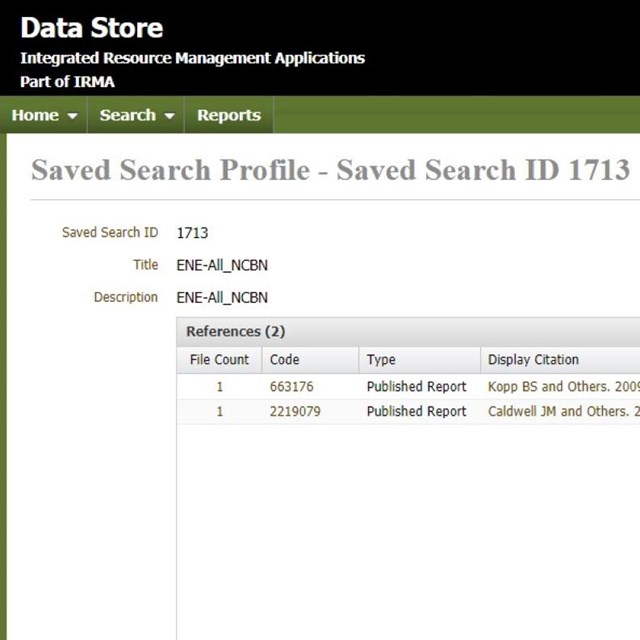
Colleen Keenan / NPS Photo
Seagrasses are valuable members of estuarine ecosystems. They form meadows that provide a source of food for larger animals like turtles and a home for smaller ones like prawns and fish. By absorbing nutrients from land and stabilizing the sea floor with their roots, seagrass meadows also help keep our waters clean and clear. While resilient, seagrasses are still vulnerable to change. Physical disturbance, coastal development, and increasingly polluted waters all impact seagrass populations. It's estimated that over 29% of global seagrass habitats have disappeared since the late 1800s.
Here at the Northeast Coastal and Barrier Network, we contribute to the global research effort to monitor estuarine seagrass, in addition to water quality. Seagrass nurtures biodiversity and healthy waters, so monitoring their health as a vital sign is crucial to better understanding the health of estuaries at our parks and beyond.
How We Monitor
-
Mark a 50m transect line within each depth zone: shallow, mid-depth, and deep
-
Mark out 0.25m by 0.25m plots at 12 random locations along the transect
-
Record observations of seagrass abundance and size at each plot
-
Sample at each depth zone every year. Or, even better, collect data four times a year, once per season. Analyze data for long-term trends.

Holly Plaisted / NPS Photo
Where We Monitor
- Assateague Island National Seashore
- Cape Cod National Seashore
- Fire Island National Seashore
Publications
-
 ProtocolSeagrass Protocol
ProtocolSeagrass ProtocolNCBN Protocol for Monitoring Estuarine Nutrient Enrichment in Coastal Parks of the National Park Service Northeast Region
-
 ReportsSeagrass Reports
ReportsSeagrass ReportsNCBN Estuarine Seagrass Reports List
Last updated: June 25, 2024
